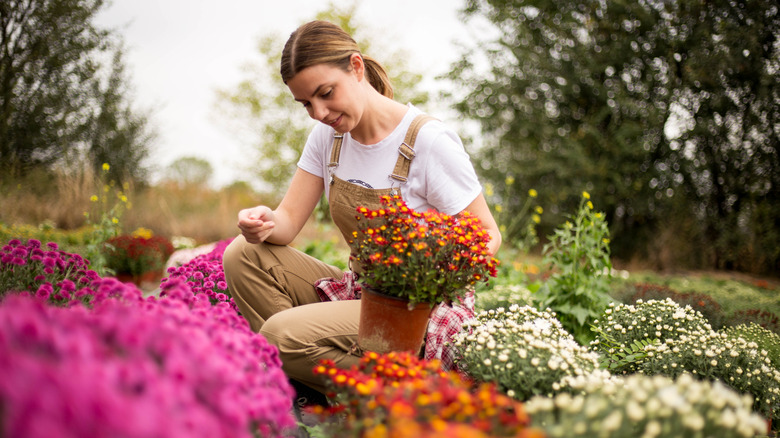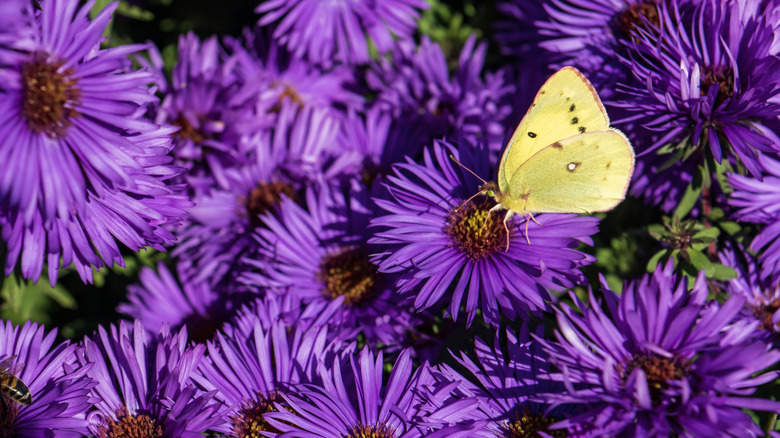Plant This Underrated Flower In August & It Will Look Stunning In The Fall
In late summer, many of the most beautiful flowers in your garden have already bloomed or are beginning to fade. It may seem like you're just waiting around for the rest of the garden to wither before you put out a pot of mums on the patio and call it a day. But, actually, there's one overlooked flower that you can plant in August. Versatile asters will bring gorgeous blooms to your garden all through the fall.
Asters thrive in USDA Plant Hardiness Zones 3 to 8. These perennial daisy-like flowers with star-shaped blooms come in a variety of colors, including blue, pink, and purple. Asters will be a welcome late seasonal flower for garden pollinators like butterflies, who often find slim pickings come September. New England asters (Symphyotrichum novaeangliae) and New York aster (S. novi-belgii) are two of the most common varieties found in North America. At home in both pots or in the garden bed, asters are low maintenance. Put them alongside the best September annual flowers like pansies for even more color.
If you start with mature plants in August, you can have blooms within just a couple of weeks. Planting asters from seed means you need about six to nine weeks until they first blossom, which might happen in areas with very mild falls and winters. And don't worry about waning daylight in summer and fall, either, because asters, like mums, are short-day plants, which need longer stretches of darkness at night to germinate and bloom.
Plant asters in these easy steps
Planting asters is fairly easy, as they love all kinds of soil, including clay, high organic matter, and silt. They're not too picky about soil pH, either, tolerating a range of slightly acidic to slightly alkaline soils, between 6 to 8. If you're planting asters in August and want quick blooms, then mature plants are probably the better bet. Make sure to give mature plants plenty of space, about 3 feet between each one. Know that asters grow between 6 inches to 8 feet tall.
If you want to know how to care for asters, just be consistent about watering, as asters can be sensitive to both drought and waterlogged ground. If the weather is still warm and you've gotten less than an inch a week of rain, it's time to drag out the hose. Too much or too little water means they won't grow as many flowers or may just look puny. If your asters begin to lose leaves, change your watering routine and see what happens.
Around late fall, you may want to prepare aster flowers for winter by cutting back old dead flowers, especially if you don't want asters to reseed themselves too much ... which they'll do if left on their own. Sometimes, these reseeded blooms may grow with different-colored flowers than the parent plant. But, of course, it's also perfectly acceptable to leave flowers on asters all winter. Birds may even snack on the seeds during cold months when food becomes scarce.

